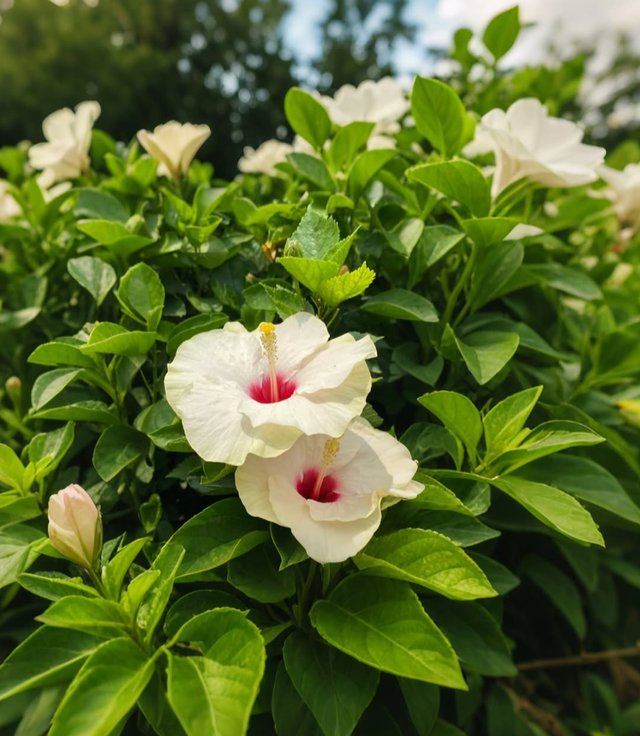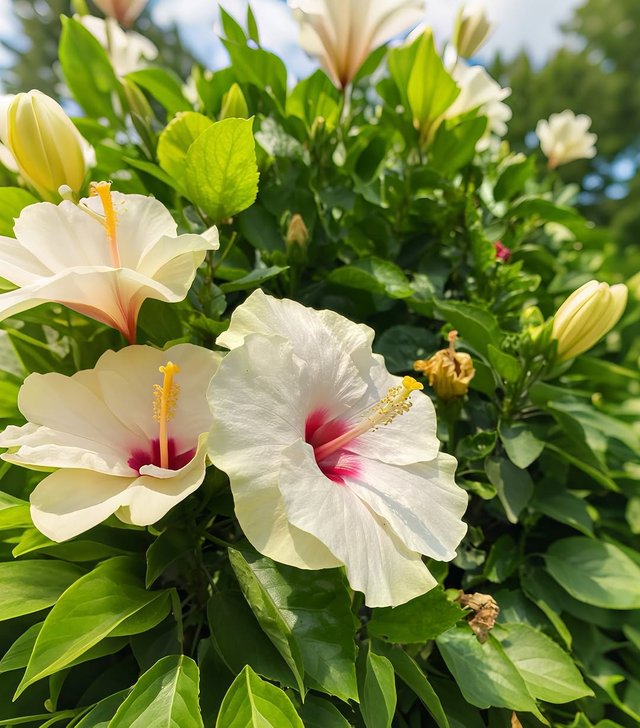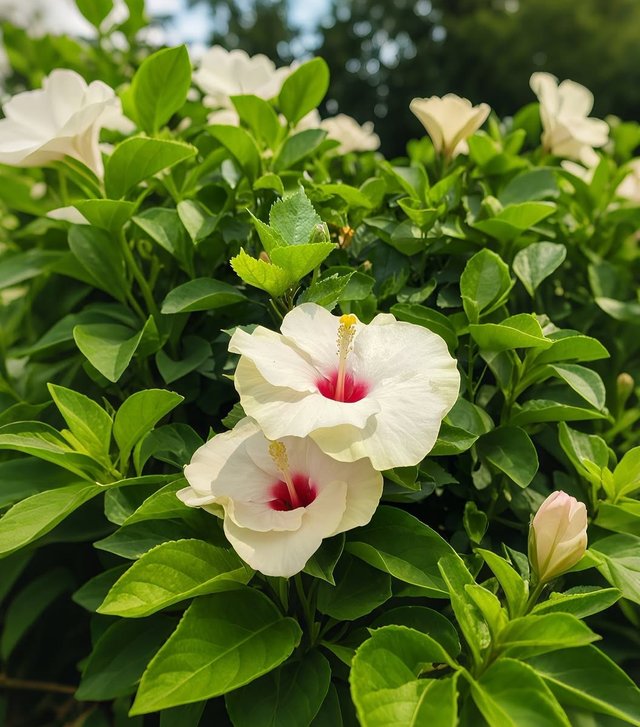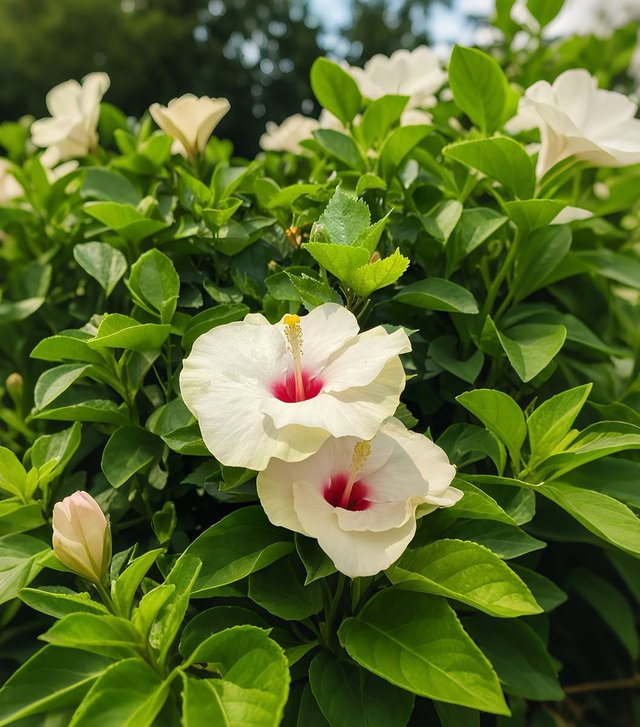Beautiful Common Hibiscus Flower
The Common Hibiscus, also known as the China rose or simply hibiscus, is one of the most admired and widely grown flowering plants in the world. Belonging to the mallow family, Malvaceae, this plant is native to tropical Asia but has spread across the globe, thriving in warm climates and captivating admirers with its striking blooms.
Botanical Overview
Scientific name: Hibiscus rosa-sinensis
Family: Malvaceae
Common names: China rose, shoeblackplant, tropical hibiscus
Type: Evergreen shrub or small tree
Height: 2–4 meters when mature
Flower size: Can range from 5 to 20 cm across, depending on the variety
Flower colors: Red, pink, yellow, orange, peach, white, and bi-colored hybrids
The plant is characterized by its glossy green leaves and large trumpet-shaped flowers, often with a contrasting central column of stamens. The blooms, though short-lived, appear continuously throughout the warm months, making the hibiscus a symbol of constant renewal.
Cultural and Symbolic Significance
The hibiscus holds deep cultural symbolism in many parts of the world:
In Asia: The hibiscus is associated with beauty, charm, and delicate grace. In China, it represents fame and wealth, while in Malaysia it is the national flower, symbolizing courage and unity.
In Hawaii: Hibiscus flowers are often used in leis and hair decorations. A flower tucked behind the ear is a traditional sign of marital status.
In India: The red hibiscus is sacred to the goddess Kali and Lord Ganesha, often used in religious offerings.
In the Pacific Islands: Hibiscus flowers represent hospitality and joy, frequently used in celebrations and cultural attire.
Uses and Benefits
Though admired mainly for its ornamental beauty, the common hibiscus has multiple uses:
Ornamental value: Hibiscus shrubs are widely planted in gardens, parks, and as hedges due to their bright and abundant flowers.
Medicinal properties: In traditional medicine, hibiscus is used to treat ailments like high blood pressure, coughs, fevers, and skin conditions. Hibiscus tea, made from dried petals, is rich in antioxidants and is known for its cooling, blood-pressure-lowering effects.
Cosmetic uses: Hibiscus extracts are often used in hair oils, shampoos, and skincare products. It is believed to promote hair growth and add luster.
Dye and polish: In some cultures, hibiscus petals are used to produce natural dyes or as a shoe polish, hence the name shoeblackplant.
| Device | cannon eos 700D |
|---|---|
| Lens | 55-250 zoom leans |
| Location | Bangladesh |




